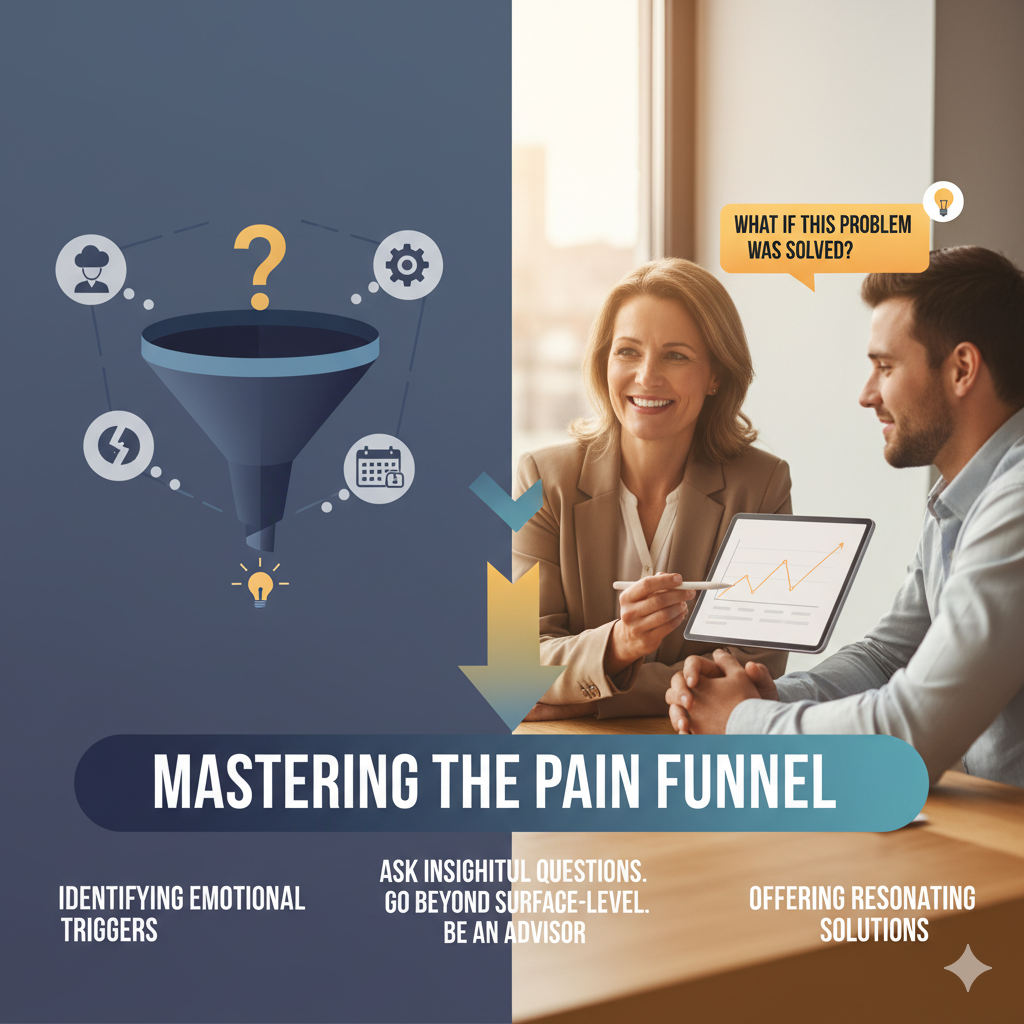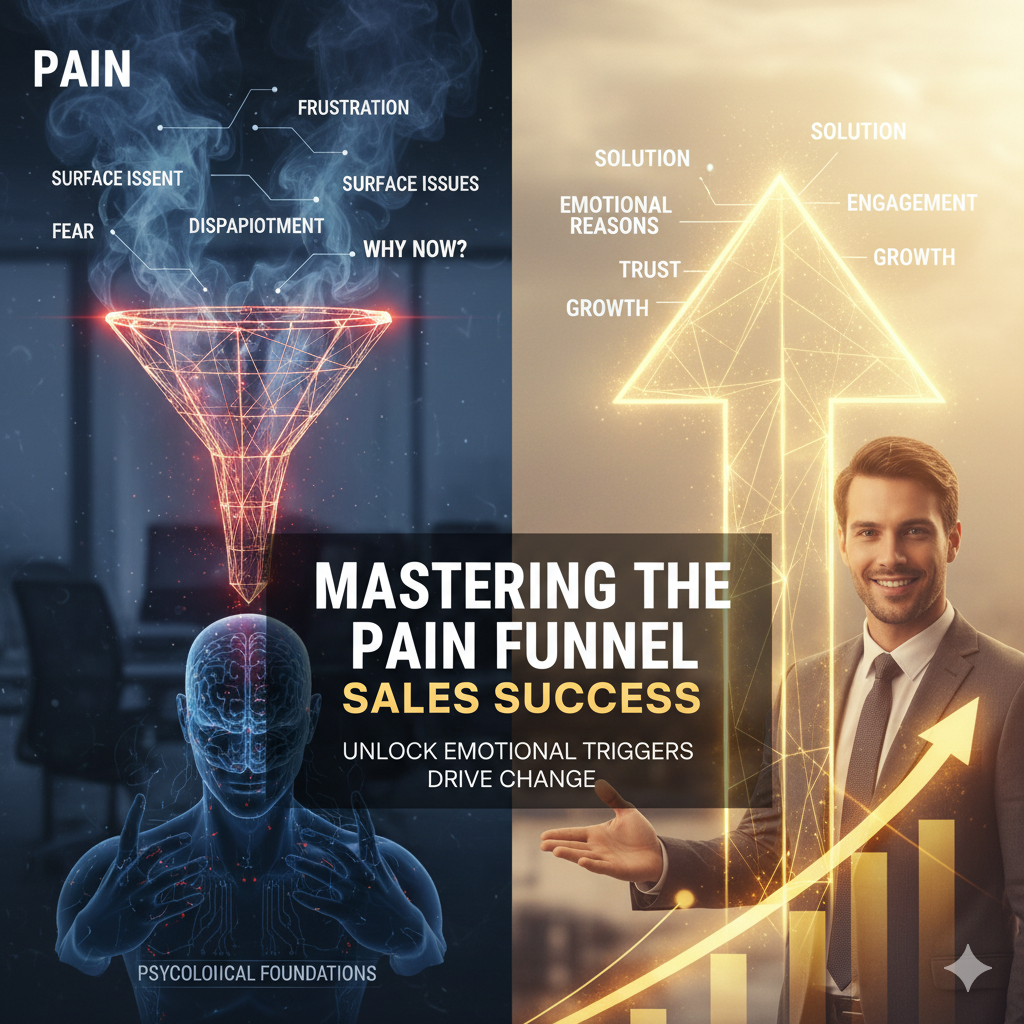Mastering the Pain Funnel: Key Strategies for Sales Success

Unlock the power of the pain funnel to drive sales success by effectively identifying and addressing emotional triggers, asking insightful questions, and moving beyond surface-level pain.
Understanding the Importance of Emotional Triggers in Sales
In sales, understanding and leveraging emotional triggers is crucial to connecting with clients on a deeper level. Emotional triggers are the compelling reasons that drive a client to make a purchase. These triggers can be feelings of frustration, disappointment, or anxiety about their current situation. By identifying these emotional pain points, you can better understand your client's needs and offer solutions that resonate on a personal level.
Clients often make purchasing decisions based on their emotions and later justify these decisions with logic. This is why it's essential to move beyond surface-level issues and dig deeper into the emotional reasons behind a client's desire for change. When you address these emotional triggers, you build trust and demonstrate that you genuinely understand and care about their concerns.
The Art of Asking the Right Questions
To effectively utilize the pain funnel, you must master the art of asking the right questions. The goal is to guide the conversation towards uncovering the client's emotional triggers and understanding the full extent of their pain. Start with broad, open-ended questions like, "Can you tell me more about the challenges you're facing?" This invites the client to share their experiences and frustrations.
As the conversation progresses, narrow your questions to get more specific details. For example, ask, "How long has this been a problem?" or "What have you tried to do to solve it?" These questions help you understand the history and context of their pain. Remember to listen actively and let the client talk at least 70-80% of the time. This not only provides valuable insights but also shows the client that you are genuinely interested in their situation.
Going Beyond Surface-Level Pain to Meet Client Needs
Surface-level pain points are often just the tip of the iceberg. To truly meet your client's needs, you must go beyond these initial concerns and explore the deeper impact of their pain. This means understanding how the problem affects their daily life, emotions, and overall well-being. Ask questions like, "How is this issue impacting your work or personal life?" or "What would happen if this problem isn't resolved?"
By delving into these deeper issues, you uncover the real motivations behind their desire for change. This allows you to tailor your solutions to address the root of the problem, rather than just providing a temporary fix. Clients are more likely to invest in a solution that they believe will genuinely improve their situation and alleviate their emotional pain.
Be an Advisor, Not Just an Expert: Avoiding Premature Presentation Syndrome
One of the biggest mistakes sales professionals make is jumping into presentation mode too soon. This is known as Premature Presentation Syndrome (PPS), and it often occurs when a salesperson is eager to showcase their expertise and solutions. However, this approach can backfire if the client's pain points and emotional triggers haven't been fully explored.
Instead of positioning yourself merely as an expert, aim to be an advisor. An advisor takes the time to ask insightful questions, listen actively, and understand the client's unique situation. This approach builds trust and rapport, making the client more receptive to your recommendations. When you finally present your solution, it will be based on a thorough understanding of their needs, making it more compelling and effective.
By mastering the pain funnel and adopting an advisor mindset, you can build stronger connections with clients and drive sales success. Remember, the key is to identify and address emotional triggers, ask the right questions, and move beyond surface-level pain to offer solutions that truly resonate.


